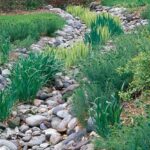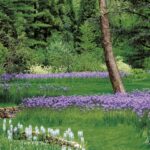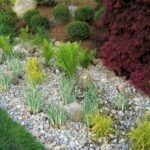Rain gardens are becoming increasingly popular among homeowners and landscape designers as a way to manage stormwater runoff and prevent erosion. These specially designed gardens are not only functional but also aesthetically pleasing, making them a great addition to any outdoor space. When it comes to rain garden design, there are several key factors to consider in order to create a successful and sustainable garden.
The first step in designing a rain garden is to choose the right location. It is important to place the garden in an area that receives a lot of runoff from roofs, driveways, and other hard surfaces. This will help to capture and filter out pollutants before they have a chance to reach local waterways. Additionally, the location should be well-drained and receive at least six hours of sunlight a day to ensure that the plants thrive.
Once the location has been selected, the next step is to determine the size and shape of the rain garden. The size of the garden will depend on the amount of runoff that needs to be managed, as well as the space available. Rain gardens are typically shallow depressions that range in size from around 100 to 300 square feet, but larger gardens can be created for larger properties.
In terms of design, rain gardens should be planted with a mix of native, drought-tolerant plants that can survive both wet and dry conditions. These plants help to absorb excess water and filter out pollutants, while also providing habitat for wildlife. Grasses, sedges, and wildflowers are all good choices for rain gardens, as they have deep roots that help to prevent erosion and reduce runoff.
In order to optimize the effectiveness of a rain garden, it is important to include a layer of porous material such as gravel or mulch at the bottom of the depression. This will help to slow down the flow of water and allow it to percolate into the soil more easily. Additionally, a berm or swale can be constructed around the perimeter of the garden to help direct runoff towards the center.
Overall, rain garden design is a great way to incorporate sustainable landscaping practices into outdoor spaces. By carefully considering factors such as location, size, plant selection, and drainage, homeowners and landscape designers can create beautiful and functional gardens that help to protect local waterways and wildlife. With the right design and maintenance, rain gardens can be a valuable addition to any property.










